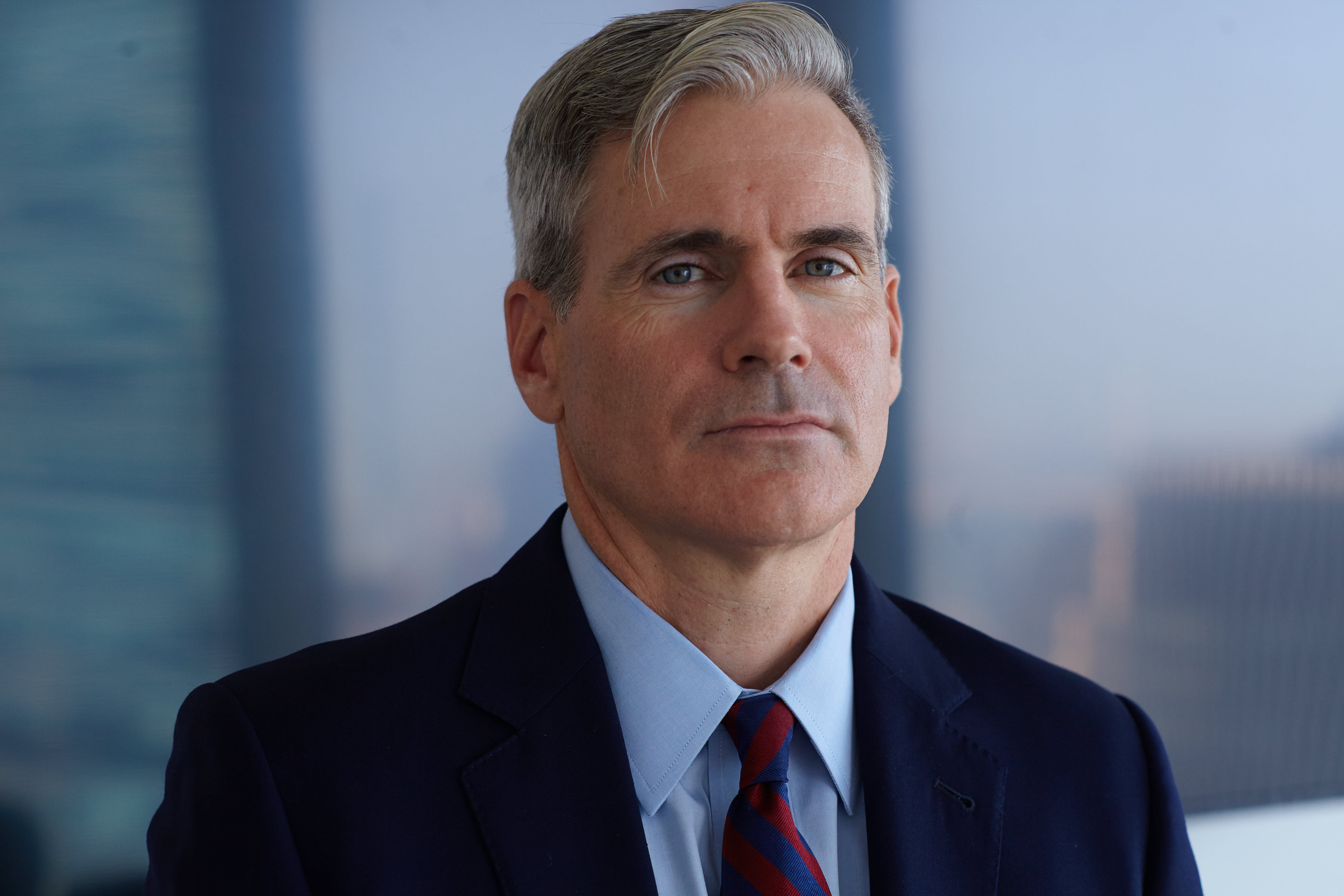BAML's Brady looks at trade with fresh eyes
A wave of new trade hires has provided Bank of America Merrill Lynch with an opportunity to focus on its strengths and leverage inherent advantages over competitors. TXF spoke with Geoffrey Brady, recently appointed as head of global trade and supply chain finance, about the direction in which the bank is moving.


Over the past two years, Bank of America Merrill Lynch’s trade team has been transformed by a succession of appointments and new hires. The three-pronged structure of the trade division – traditional trade finance, supply chain finance, and export and agency finance – may not be unique, but there is a determination to embrace fresh perspectives on how the bank approaches trade.
Geoff Brady heads up the trade and supply chain finance on a global basis, having recently moved over from JP Morgan. He joins Fiona Deroo head of North America trade and supply chain finance product sales; Lesley McNamara, head of global trade product and strategy; David Trecker, supply chain product head; and Patrick Gang, traditional trade and export and agency product head. Brady reports to JP Jolly, head of financing and channels, and heading up all of global transaction services is Faiz Ahmad, also both relatively new to their roles.
“Patrick is relatively new, and Leslie and David have both been promoted into their roles in the last 18 months or so. In that regard we are somewhat of a new team. All of this new blood allows us to take a fresh look at the GTS business. Both through internal moves and external hires, we have the ability to look at things through a different lens and hopefully bring a fresh perspective to the trade business,” says Brady.
Having joined from a competitor institution, Brady was well aware of the bank’s key strengths and capabilities: “Bank of America’s key strength is the sheer breadth of its corporate relationships in the US, from large corporations to deep into the middle and commercial banking market. If you look at a business such as supply chain finance, we act as a financier between a buyer and all of their suppliers, and the commercial relationship that they have. We are also the bank to a lot of those suppliers through our extensive franchise, and that makes us especially effective and competitive – a significant advantage for us. Beyond that we also have a broad global footprint which is obviously important in trade. I’ve always thought this about the bank, and it has been validated since I joined.”
Brady and the team are hard at work articulating the trade and GTS strategy to the wider organisation, explaining areas of focus and where partnerships are possible. One aspect they are keen to focus on is connectivity between the trade business and the markets. “We need to look beyond the bank market for distribution and widen that avenue into the capital markets, as the trend is certainly in that direction, especially for supply chain finance and export & agency finance. We need to explore how this is happening across the credit spectrum, not just in trade and supply chain finance, but also in general bank lending. There will be a greater emphasis on using the markets; credit trading, short term investments, etc, to bring in some of the discipline that creates more touch points with the broader investor universe. I think it is incumbent on us to have the most robust distribution capabilities to reach that wider base, because if you think of supply chain programs at large firms, we tend to run pretty big tickets. Distributing into the capital markets as efficiently as possible, and of course also using our partner banks and third-party platforms, is going to be increasingly important,” says Brady.
It would be fair to say that the export and agency finance pillar of the bank’s trade offering has not necessarily been a focus in recent years, but Brady assures that there will be more deal flow going forward – both participating in larger transactions and originating new deals.
He says: “It will be a little of both initially. We have a team that includes experienced individuals, some new to the bank and some that have been here a while, that have a history of originating deals, and have relationships out in the industry on that front. As one of the cornerstone relationship banks for a lot of clients on both the buyer-side and the seller-side in export finance, I think it’s fair to say that there has been some surprise that we haven’t been more engaged on the origination side in the last year or so. However, as a leading bank that is looked on favorably, and seen as a thought leader, there is demand there for us to support clients across all aspects of trade – so origination will feature as part of that in the near future.”
Musing over the opportunities present in the wider trade space, Brady thinks that the market can sometimes be distracted in looking for the next big thing: “The industry buzz is always around the technology – the new thing is always the most fun, and a big screen on a wall running a demo can give you this window to the future. That’s an important part of the conversation, but what I personally think is more important, and the real story of trade finance over the last ten years or so, is the dramatic growth in supply chain finance. I don’t think we’ve ever seen such explosive growth in a segment of trade finance before. We are now at a point now where every large corporate in the US, and indeed globally, has either implemented, is implementing, or is considering implementing, a supply chain finance program to optimise work capital, and to maximise what could potentially be free cash flow.”
He adds: “This is a story not just about origination, but also one of improvement. Can we do it better? How can we make more capacity available? How can we do more? How can we reach more suppliers with our programs? I think the criticism of supply chain finance has been that it's great for the top, high value strategic suppliers, but how can we make it more impactful for the lower value non-strategic suppliers? And that's where as an industry we should be figuring out how we can make this available through technology, through different distribution platforms, through different on-boarding platforms, to make this the thing that sustains the growth for this business and also creates value for our clients. It's where we as a bank focus a lot of our energy and resources in terms of technology. Concentrating on what improvements we can make in the short-term.”
A question that is frequently asked when it comes to technological innovation in trade finance, is what is actually deliverable, and in what sort of time frame? Brady is frank when it comes to the history of trade finance and technology: “As an industry, we've not really been able to cross a threshold for using technology to make our business simpler and more efficient. Beyond what we were able to leverage through the spread of the internet, there haven’t been any dramatic improvements. There have been initiatives that have come and gone over time, but I don’t think we’ve materially moved the needle on how we originate and improve the flow of transactions.”
He continues: “Now, the conversation has moved on to distributed ledger and blockchain, and we’ve seen proof of concept demonstrations, so we know technologically the direction in which we are moving, but the question of implementation is yet to be addressed. How do we make this accessible, widely disseminated, with low barriers to entry? Those conversations are going on right now, and the good news is that there is more collaboration now around technology in the trade finance space and there has ever been.
“Behind all of that is the standardisation question – and there is a lot of hard work to be done, which is challenging, but will lead us to more opportunity. I like the analogy of that we can have a choice of portal – like a web browser – but the rules that govern those portals and the content you access are the same.”
With trade never far from the headlines at the moment given the escalating tensions over tariffs and free trade agreements. Many banks are having to pay close attention to how their customers are reacting when it comes to positioning supply chains and other considerations.
“As a bank we are always talking to clients and asking them questions to take the temperature of the market and extrapolate what that might mean for us. Currently for our clients, it's often about taking precautionary measures, and I think that can also create opportunity. There will be spikes and dips connected to the headlines – for example, a year ago there was a lot of anxiety around the future of NAFTA, but then a deal got signed and the conversation moved on. We are in a very different political environment globally. Many of our clients are telling us that they are aware as always, but they are not making any huge moves yet as there is still so much uncertainty. It underlines the fact that it is always useful to optimise working capital to be responsive to situations as they arise.”
Recent changes to US tax law have also raised the question of whether clients’ treasurers should look at cash repatriation. Brady adds: “It is definitely a part of the conversations we’re having. Part of it is going to be a currency pooling conversation, part of it is a trade finance conversation, and part of it's a liquidity conversation. Having those three aspects all in the same group is where we see the real benefit – you can take a holistic view. It is also a two-way conversation, as we are going to want to hear their ideas too. Ultimately if a client wants to repatriate cash, we are there to think about how they can optimise that cash to make it work better for them.”
New hires and appointments in Bank of America Merrill Lynch’s Global Trade and Supply Chain Finance team
|





